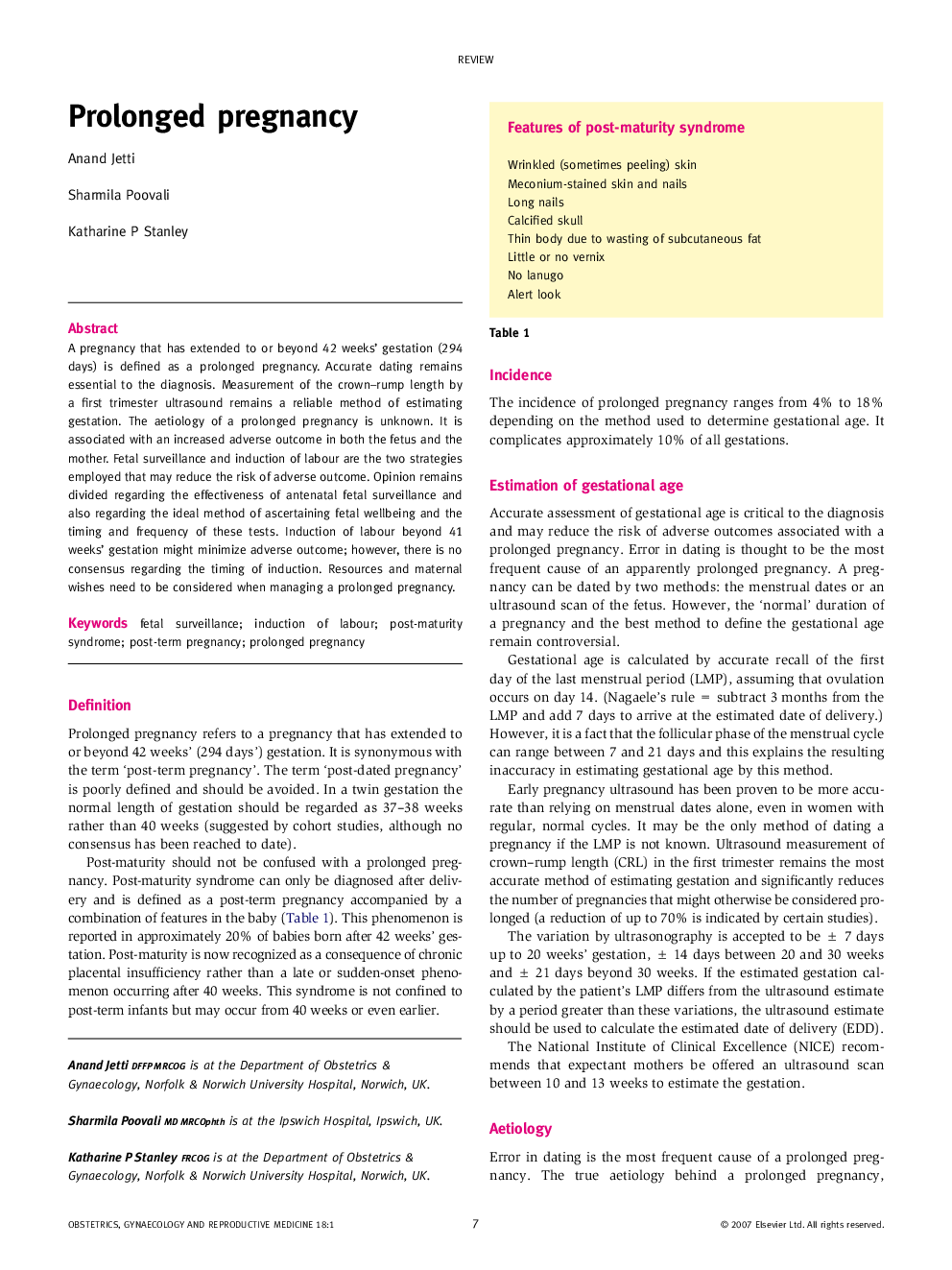| Article ID | Journal | Published Year | Pages | File Type |
|---|---|---|---|---|
| 3967527 | Obstetrics, Gynaecology & Reproductive Medicine | 2008 | 5 Pages |
A pregnancy that has extended to or beyond 42 weeks’ gestation (294 days) is defined as a prolonged pregnancy. Accurate dating remains essential to the diagnosis. Measurement of the crown–rump length by a first trimester ultrasound remains a reliable method of estimating gestation. The aetiology of a prolonged pregnancy is unknown. It is associated with an increased adverse outcome in both the fetus and the mother. Fetal surveillance and induction of labour are the two strategies employed that may reduce the risk of adverse outcome. Opinion remains divided regarding the effectiveness of antenatal fetal surveillance and also regarding the ideal method of ascertaining fetal wellbeing and the timing and frequency of these tests. Induction of labour beyond 41 weeks’ gestation might minimize adverse outcome; however, there is no consensus regarding the timing of induction. Resources and maternal wishes need to be considered when managing a prolonged pregnancy.
